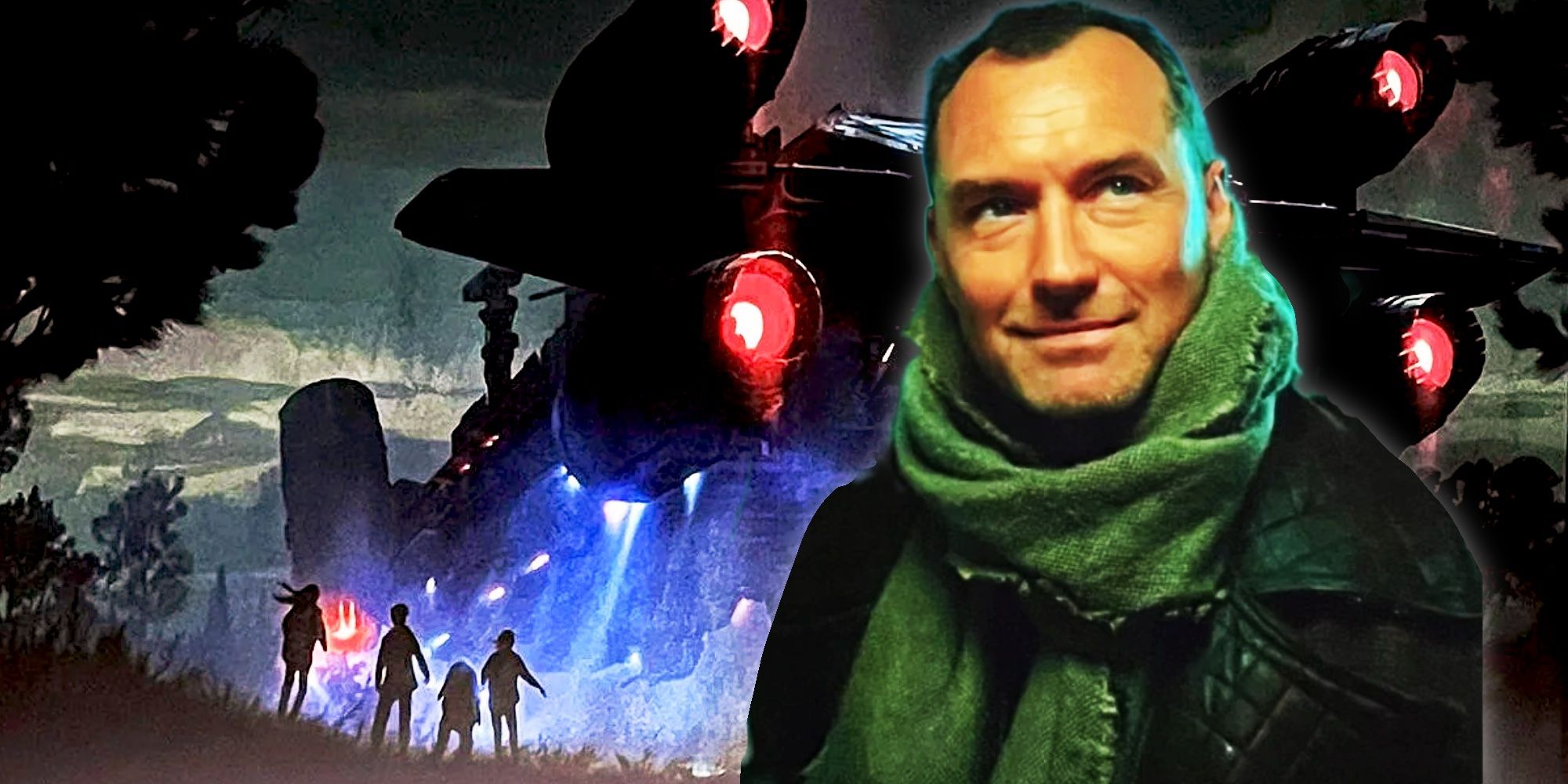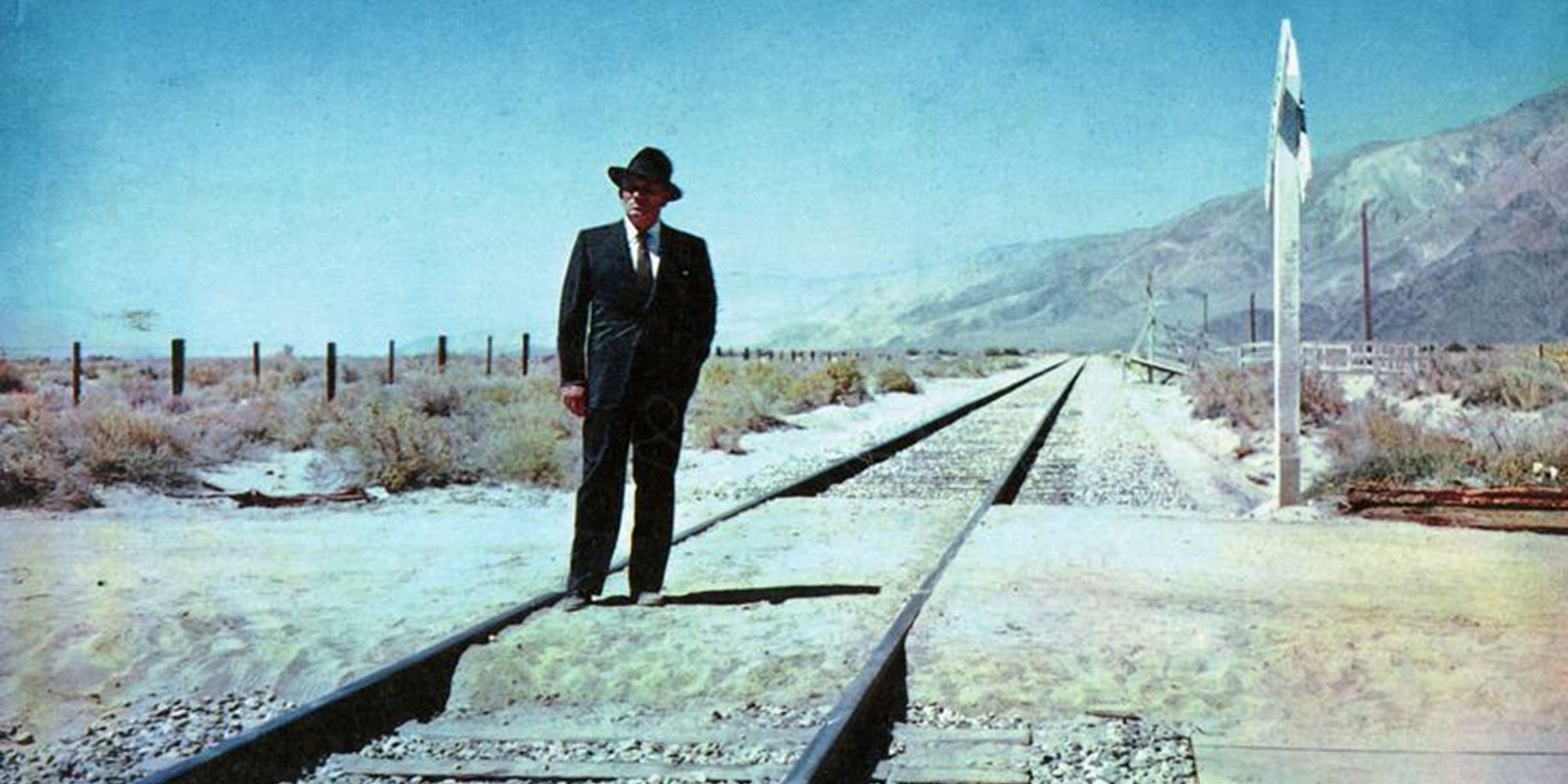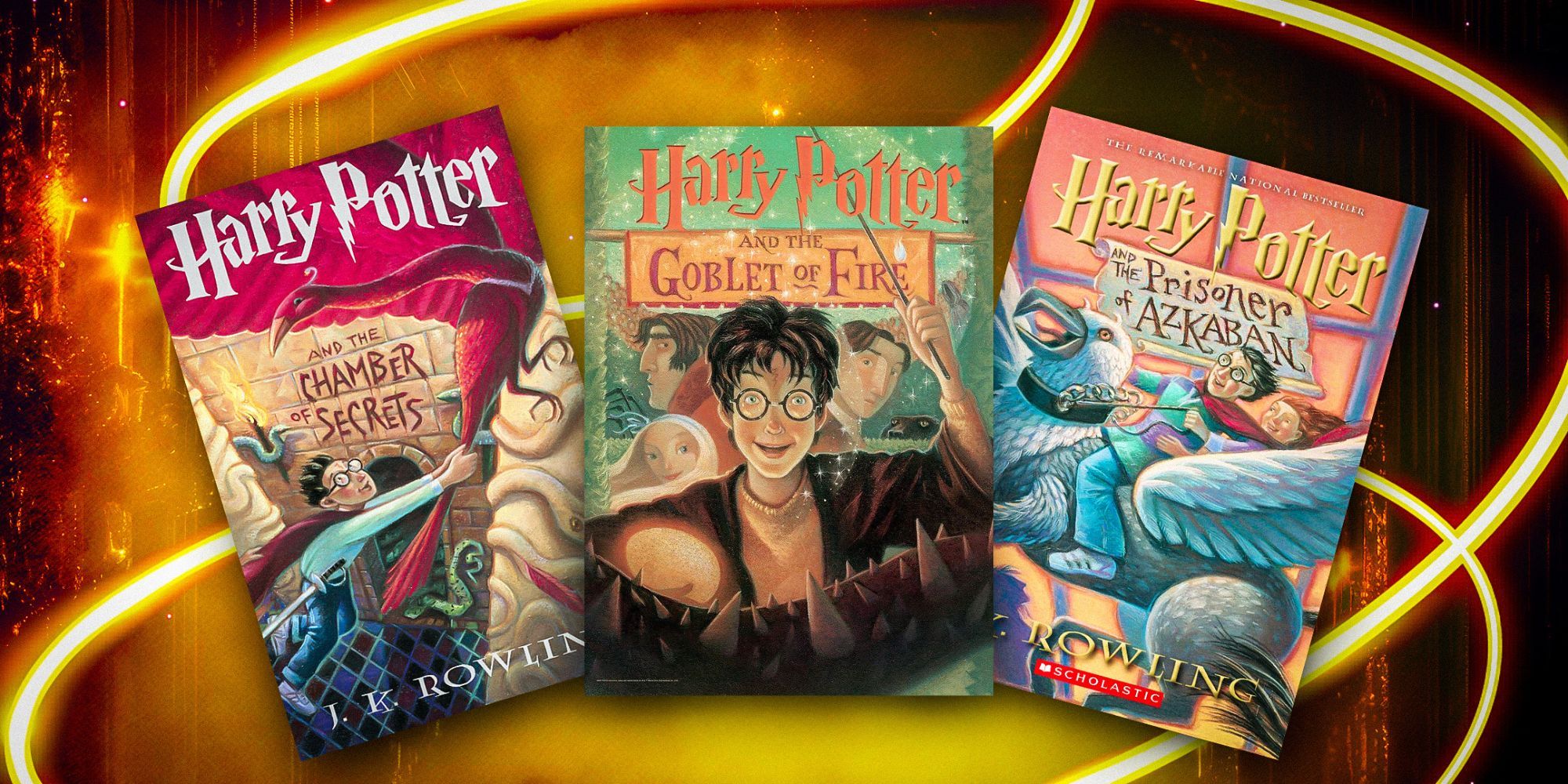Amidst the trepidation from many Game of Thrones fans to return to Westeros, House of the Dragon was a smashing success, putting up numbers comparable to GoT and solidifying it as one of HBO’s new hallmark series. Fans are eager for season 2, especially to learn more about Aegon the Conqueror’s groundbreaking prophecy first revealed in the series premiere. Not only did this massively expand and enrich the lore of the Targaryens and their history in Westeros, but it also connected them more intrinsically with the White Walkers from beyond the Wall.
While the prophecy signals their return as detailed in Game of Thrones, fans shouldn’t expect to see the White Walkers show up in House of the Dragon, except perhaps in a final stinger of the series finale. Their history was set to be expanded in the Long Night spin-off starring Naomi Watts, but that was abandoned, so perhaps the proposed Jon Snow spin-off might explore that. There is still much to learn about the White Walkers, but book readers are privy to some interesting tidbits about them from A Song of Ice and Fire.
The Others
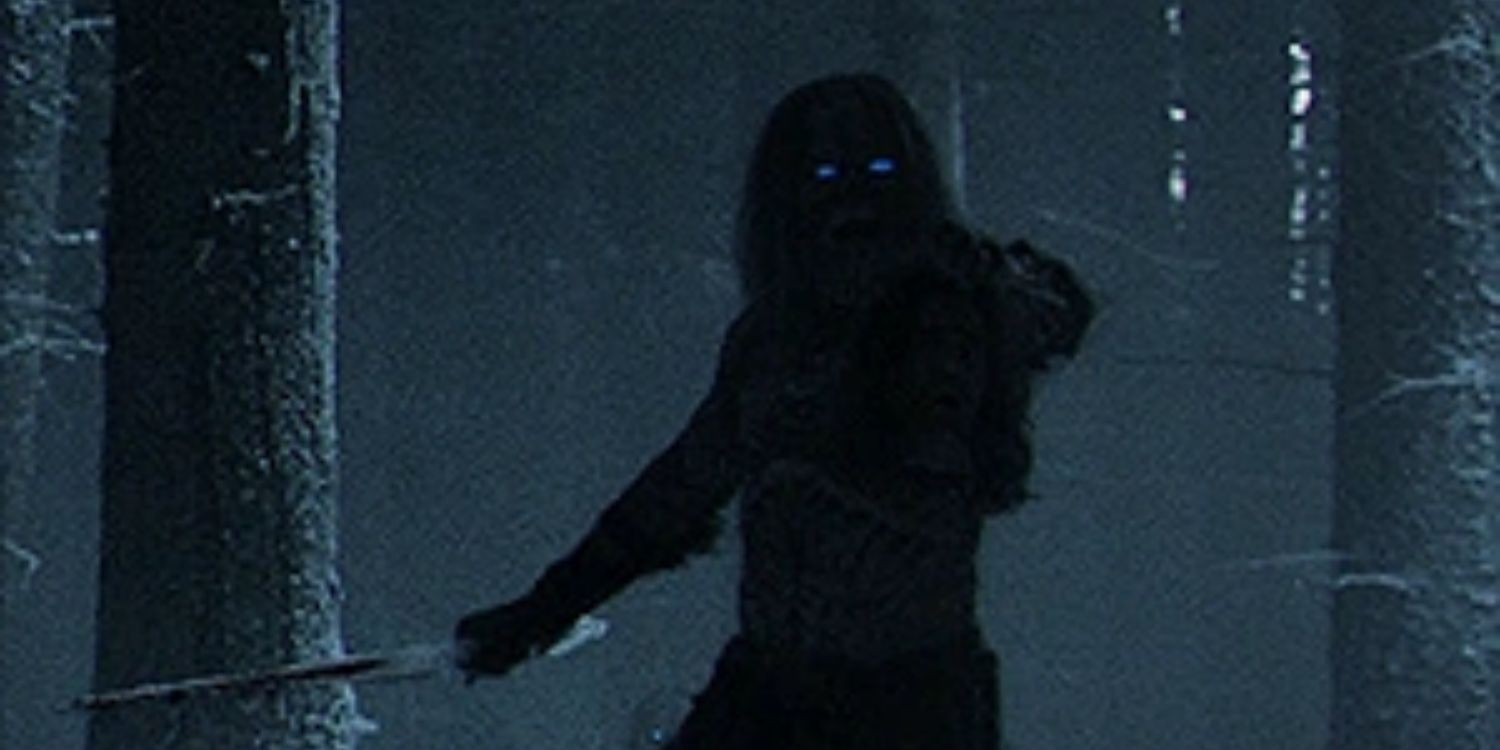
One thing that book readers would know about the White Walkers is that they have a more prominent name in the novels. As they are mere legends to most within the world of A Song of Ice and Fire, their true name has been lost to time, so they are simply referred to as the Others. They’ve also been called the cold gods and white shadows. These names are apt as their involvement in the novels is still kept primarily in the shadows, especially compared to their prominence throughout the show, being responsible for some of Game of Thrones’ most brutal deaths.
In fact, they’ve only appeared in the flesh on two occasions — the prologue of A Game of Thrones featuring Ser Waymar Royce attempting and failing to fight some and Sam’s slaying at the Fist of the First Men in A Storm of Swords. Even the wildlings seem to revere the Others, though in fear rather than adoration like a normal god, as shown by Craster sacrificing any son he has to them.
The Sidhe
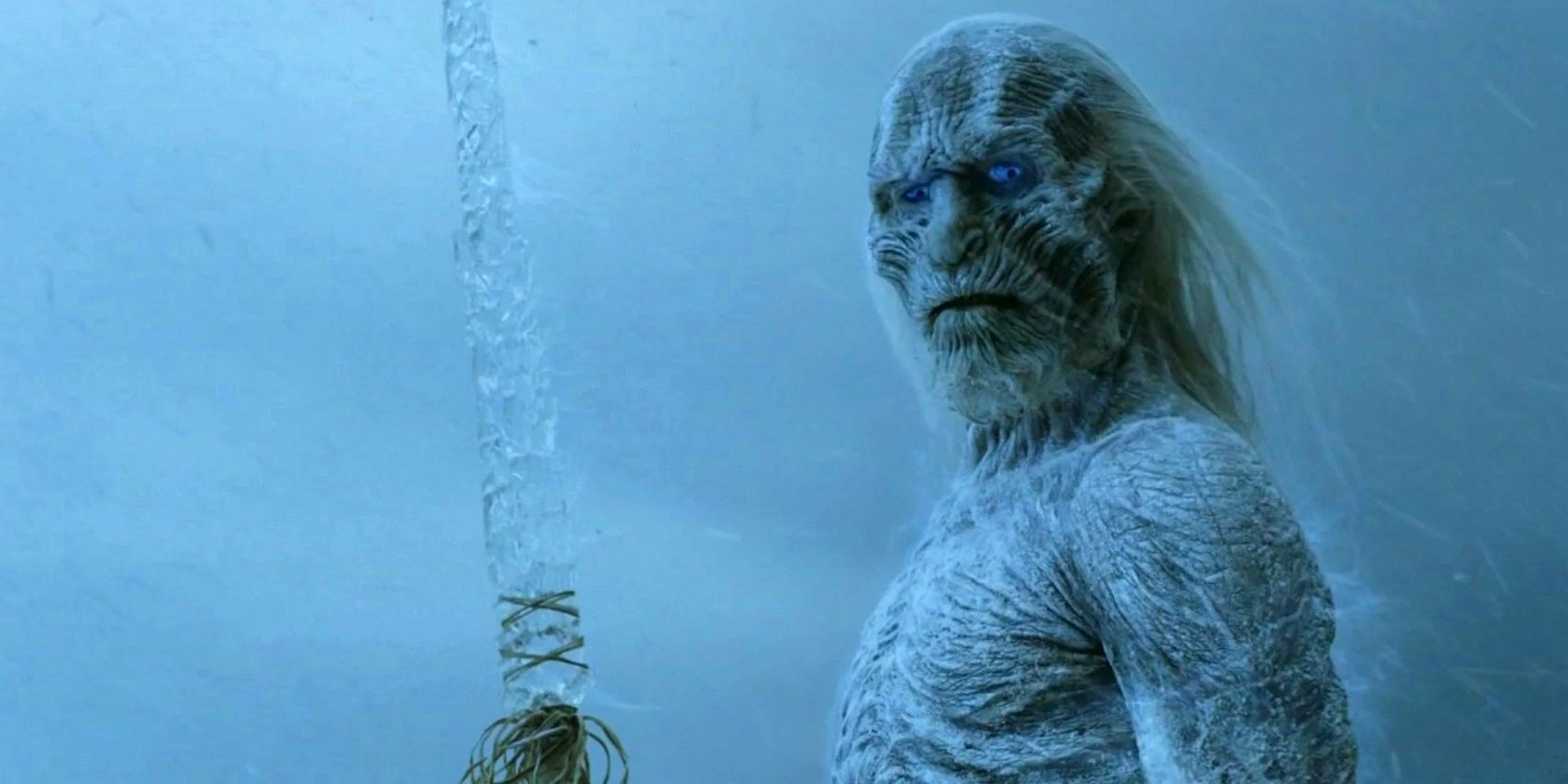
In Game of Thrones, the White Walkers are haunting and corpse-like. However, George R.R. Martin describes them differently in the novels. While still tall and gaunt with pale skin and shocking blue eyes, the Others are still described as being strangely beautiful and elegant. Interestingly, they are partly based on the Sidhe of Celtic mythology, which are somewhat similar to elves and fairies in fantasy and other folklore.
The Sidhe, or Aos Sí as they’re also called, are like forces of nature, comparable to gods and angels, and are connected with the lore of changelings. That’s something they share with the Others. While the Sidhe will kidnap and replace children with their own kind, the Others will create more of themselves from human children.
Where Do They Come From?
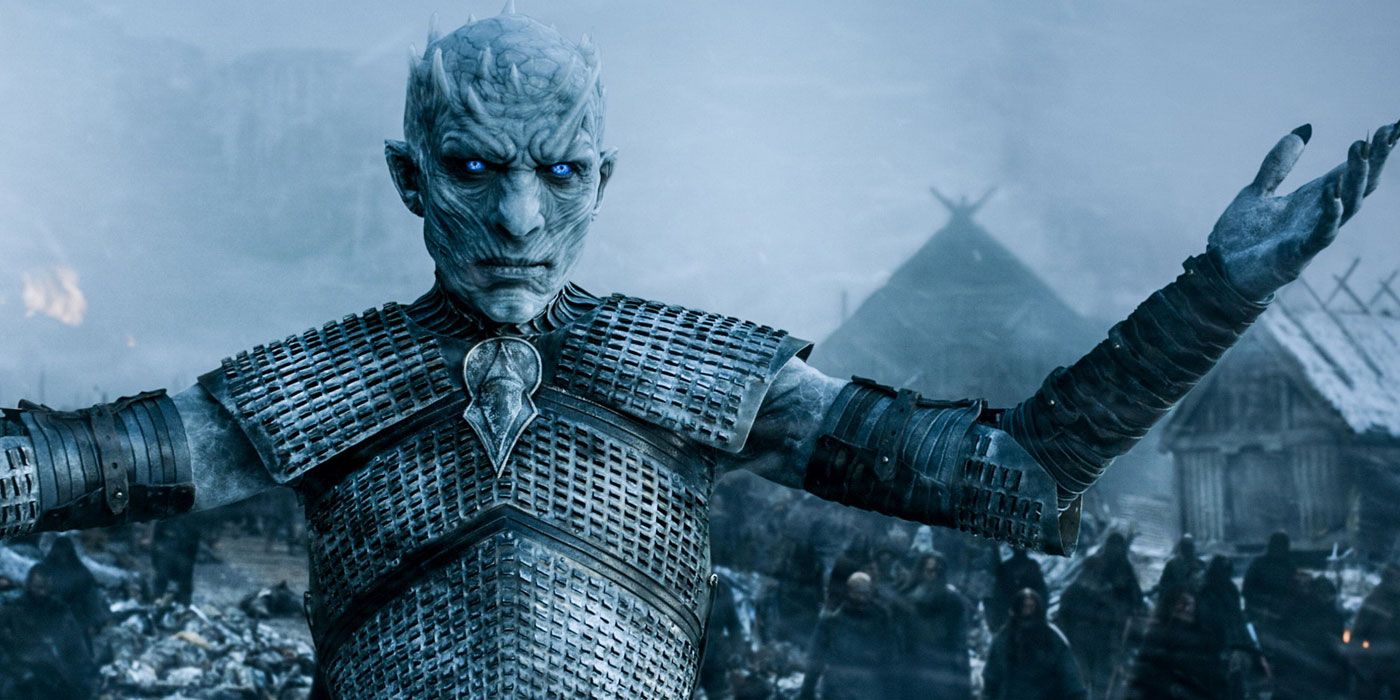
Game of Thrones greatly expanded what is known about the origins of the White Walkers, showcasing how they were first created by the Children of the Forest as a weapon against the First Men. That’s yet to be explored in the novels, so all that book readers know about them is that they mysteriously appeared thousands of years ago out of the Land of Always Winter.
In A Song of Ice and Fire, most characters have no reason to even believe they actually exist. As such, there are various in-universe theories about where they came from and how their lore might’ve originated. One suggestion is that they were just men from the distant, cold North who ventured south and were pushed back by the Night’s Watch and the Starks, who in turn, immortalized them in legends as demonic creatures to hyperbolize their heroics.
Defeated By The Last Hero
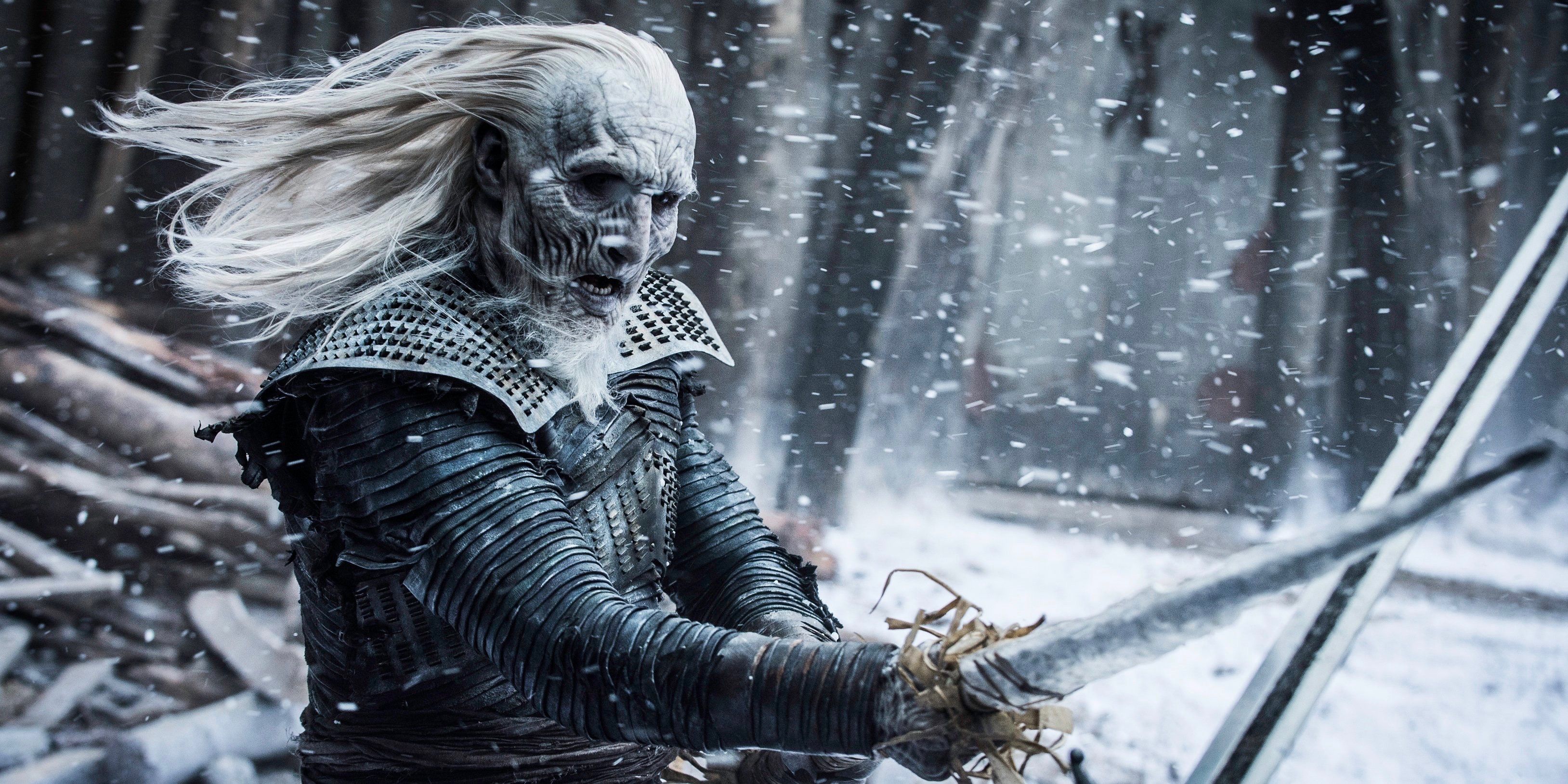
A big part of the Others’ lore is that it took the joint efforts of the First Men and the Children of the Forest to defeat them. This alliance was accomplished by the legendary figure known only as the Last Hero. Just like the Others, this person is shrouded in mystery — although their story was likely going to be featured in the canceled Long Night spin-off series, so it’s a shame that didn’t proceed as intended.
What is known about the Last Hero was simply that during the height of the Long Night, they traveled in search of the Children with twelve fellow First Men, a horse, and their trusty dog. One by one, each of his companions was felled by the invading cold forces, including the dog, but they were successful in finding the Children and subsequently forming the Night’s Watch and raising the Wall to curb any future return of the Others.
Known Beyond Westeros
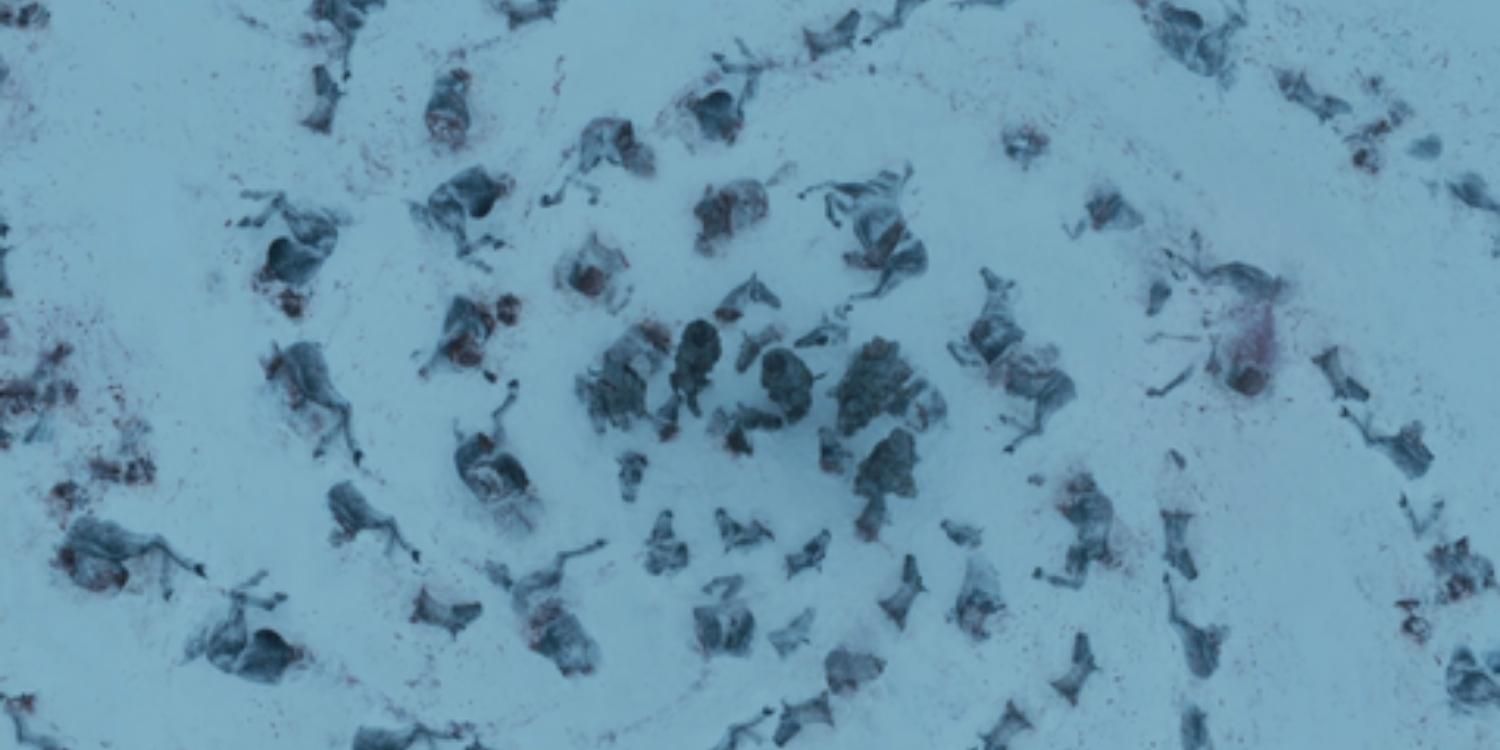
The Others and their struggle during the Long Night with the Last Hero seem connected to the Prince that Was Promised, the most significant prophecy from the novels. While the Others are solely figures in Westerosi legends, their impact is still felt across the Narrow Sea. Across Essos, different civilizations have their own recounting of the dark period.
The Rhoynar — who will be central figures in the proposed 10,000 Ships spin-off about Nymeria — say that the Rhoyne was drained of all water and remained frozen in the darkness, which only ended when a hero convinced the gods to join forces and sing a song that brought back the day. Most prevalently, Azor Ahai is a legendary figure who supposedly led humanity to victory against the force of evil with his flaming sword, Lightbringer, and he’d be reborn to do so again should the Others return. They are importantly connected in opposition to R’hllor and the Red Priests as the Others might be the children and agents of the evil god of darkness, the Great Other.
The Night’s Queen
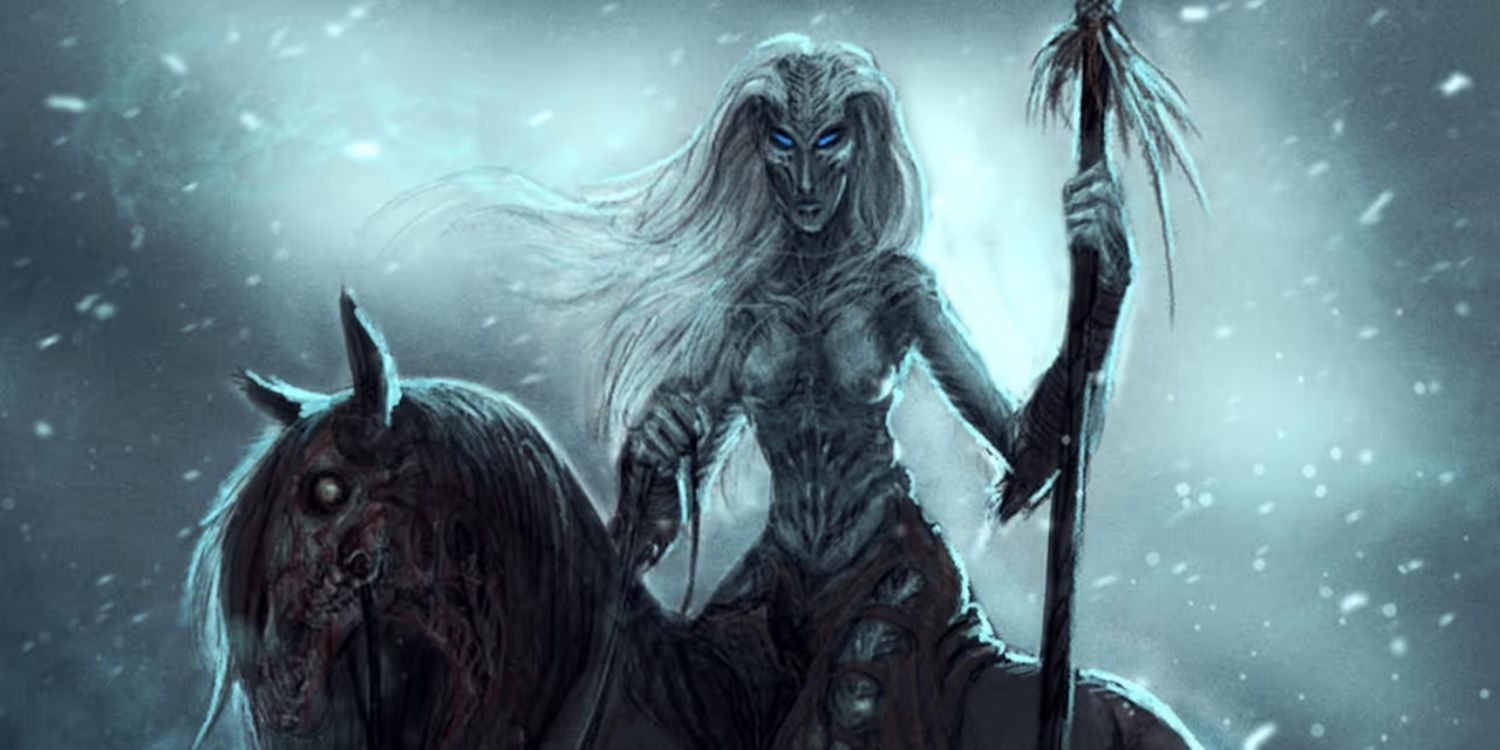
The Night King is the lead White Walker, and presumably the first, in Game of Thrones. However, in A Song of Ice and Fire, this character has a different history. He was the thirteenth Lord Commander of the Night’s Watch, and possibly a Stark, who fell in love with what is considered to be a female White Walker — though that’s not been explicitly confirmed. He became the Night’s King and her his Queen, and they briefly controlled the Wall, committing untold atrocities in the name of the Others.
There was no indication of a female White Walker in Game of Thrones, but some fans thought they could’ve been setting one up. Some had theorized, and after the polarizing Got finale, concocted alternate conclusions, including one in which Cersei would be killed and then restored as the show’s Night Queen opposite the Night King.
Their Language
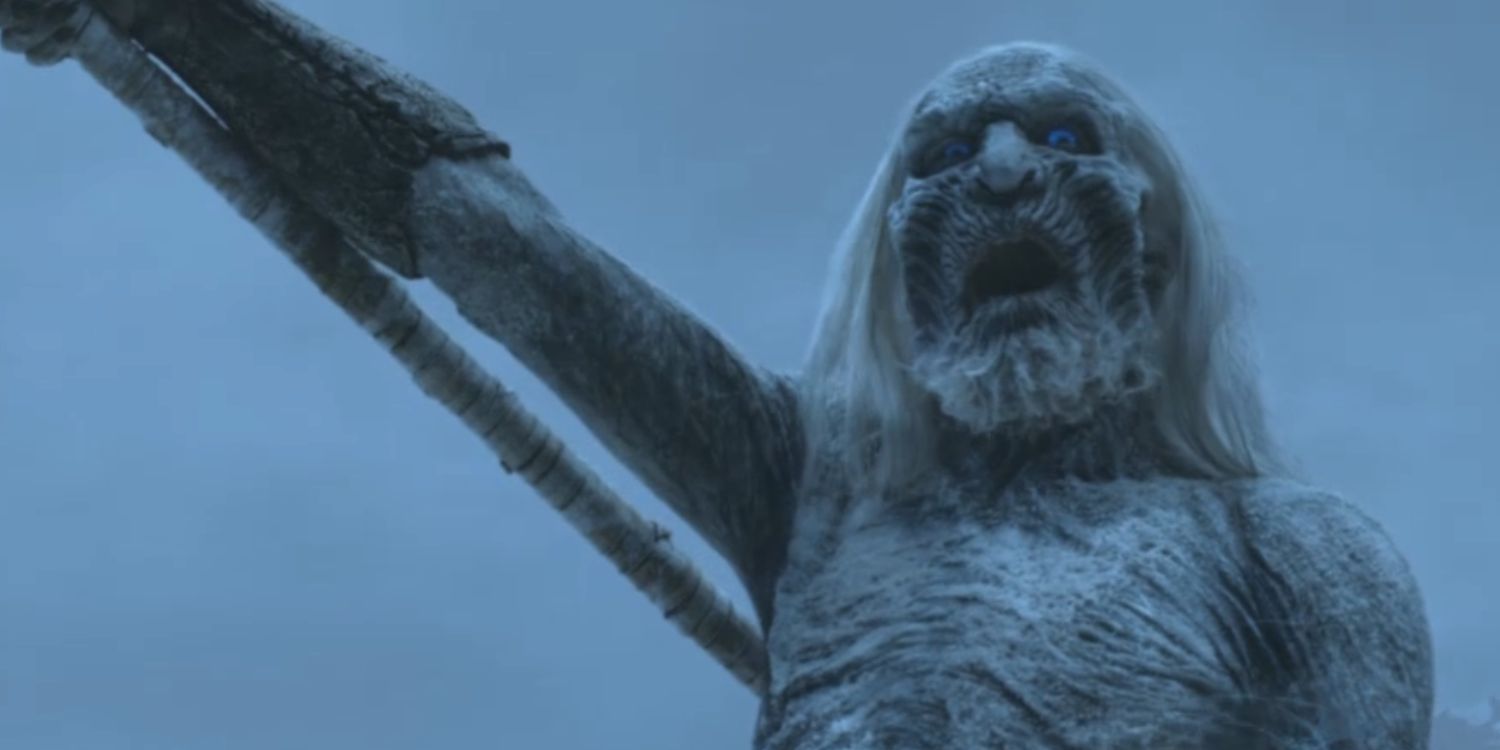
Game of Thrones did give a name to the White Walker’s language, calling it Skroth. In the novels, it’s described as “the cracking of ice on a winter lake.” Obviously, it’s nothing readers or audiences will ever truly understand, but it’s an interesting addition to the likes of Dothraki and Valyrian which can be translated.
Additionally, in the prologue of A Game of Thrones, while Ser Waymar Royce attempts to fight back, they are described as laughing maliciously. This is not something shown in the show wherein they are utterly humorless and stoic. Their laughter is, of course, cold, biting, and cruel.
Their Weapons And Armor
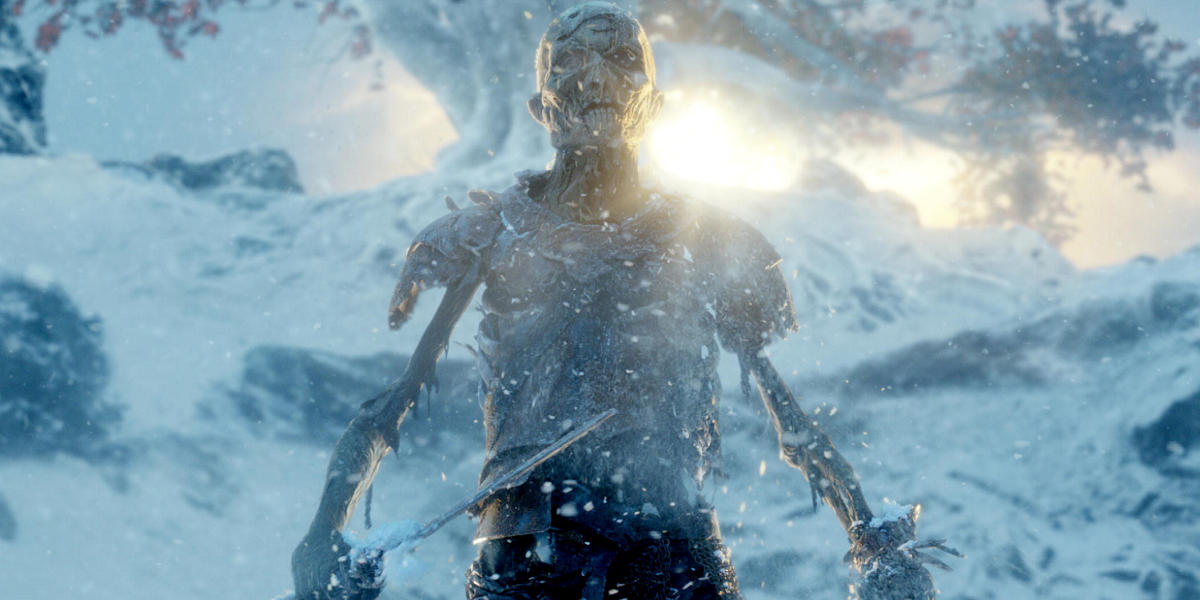
Along with the power to revive their victims as mindless wights, the Others possess incredible strength and unique crafting skills. Their weapons are made of pure ice, though mystically strong enough to shatter iron and steel. Interestingly, that action makes the sound of a high-pitched screech The only thing that could break them is dragonglass or obsidian.
One element about the Others that Game of Thrones did not adapt was their armor. They are shown in relatively standard armor, but in the novels, it is camouflaging and reflective. The armor “seems to change color as they moved” and, similar to their swords, are likely imparted with their magic.
Mounted On Ice Spiders
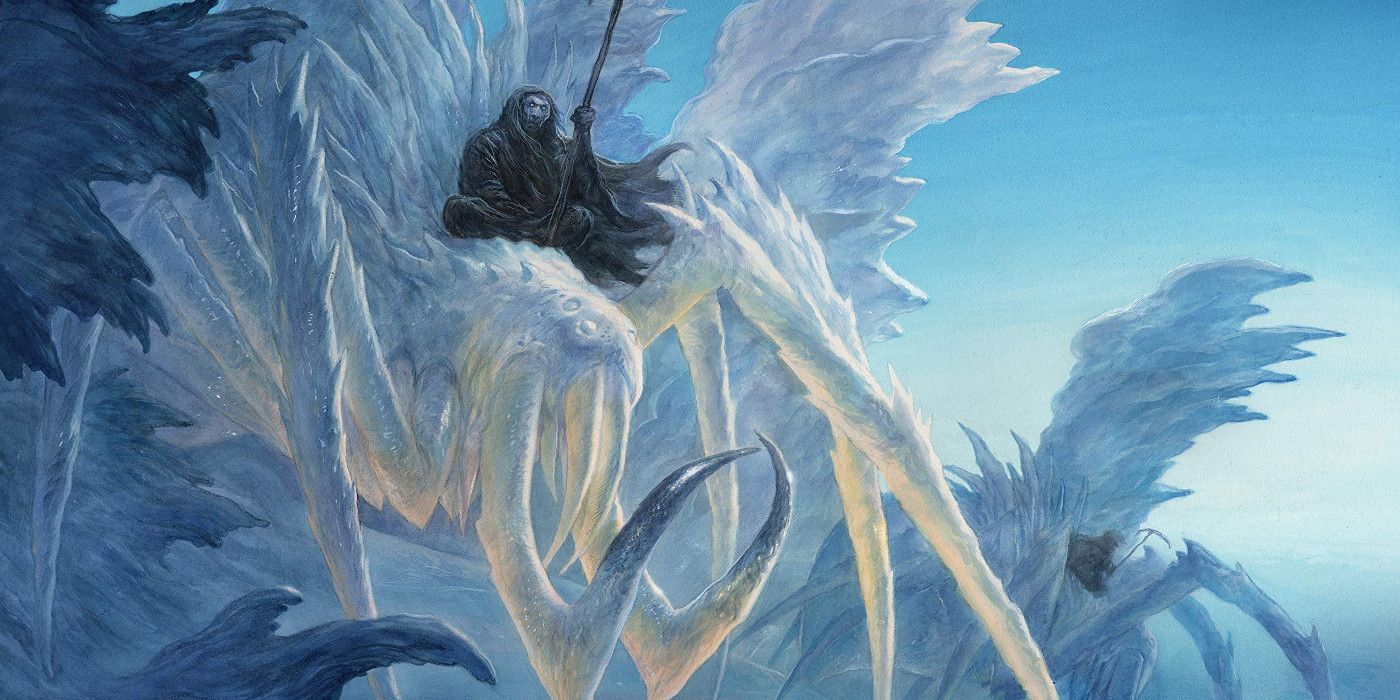
While dragons and direwolves rightfully get most of the attention thanks to their prominence in the story, the Got novels have many other cool creatures, including the giant ice spiders. In the legends recounted by Old Nan to Bran, they were described as the mounts for the Others, being as large as hounds.
As they haven’t explicitly appeared yet with the Others in the novels, they are equally shrouded in mystery. Intriguingly, they could have just been made up as the legends passed from generation to generation, though most likely that’s not the case. They might not even be actual animals but rather icy constructs created by the Others like their weapons and armor.
They Bring The Night & Cold
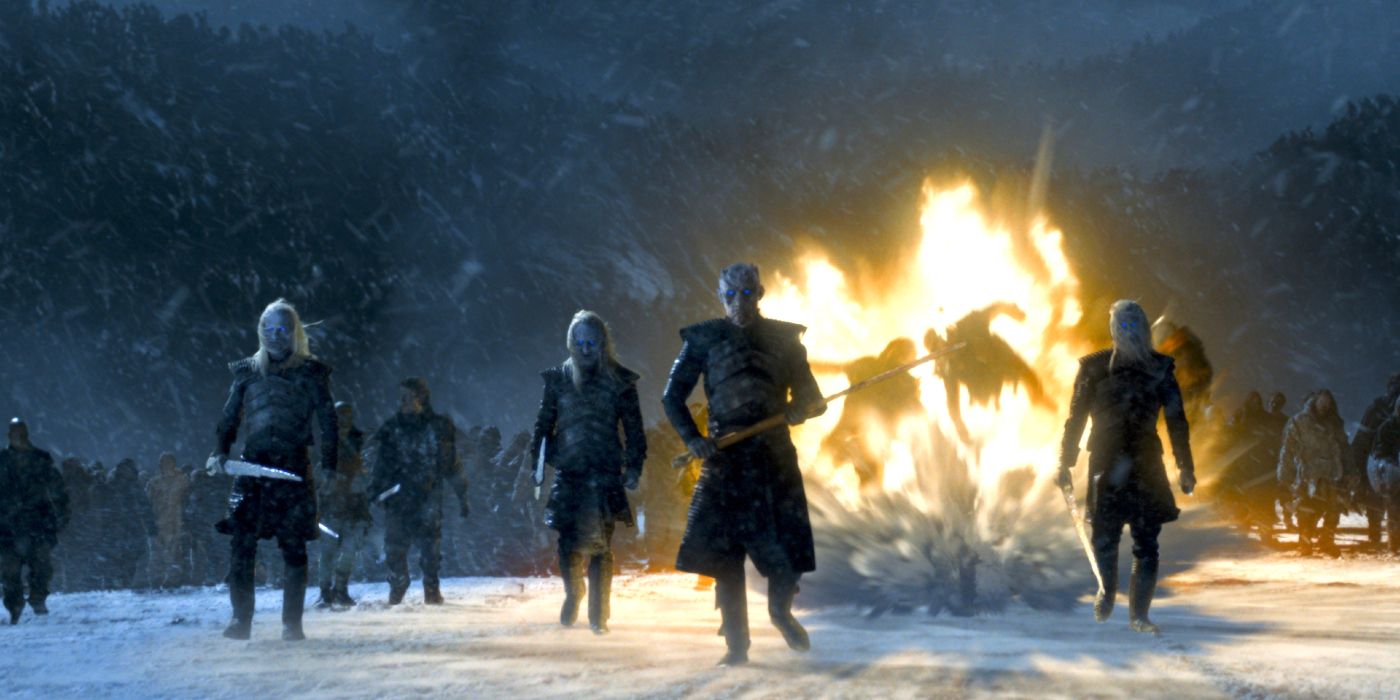
One of the most important qualities of the Others is their relation to the dark and cold weather. They are described as only appearing at night, hating the warmth of light and fire. They hunt “every creature with hot blood in its veins” according to Old Nan. While it could simply be that they only appear in the dark, given their mystical nature it might be more apt that they bring the night wherever they go.
That would explain the emergence of the Long Night, a time when even the daytime was clouded in darkness and the Sun supposedly disappeared. The show didn’t follow this to the tee, as they had been shown in daylight several times, so this is a quality unique to the novels.
